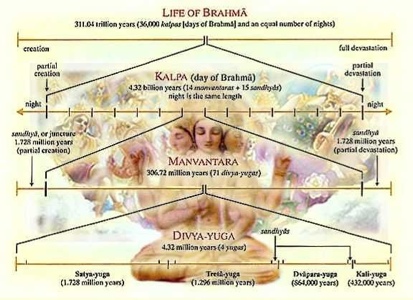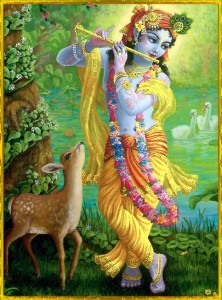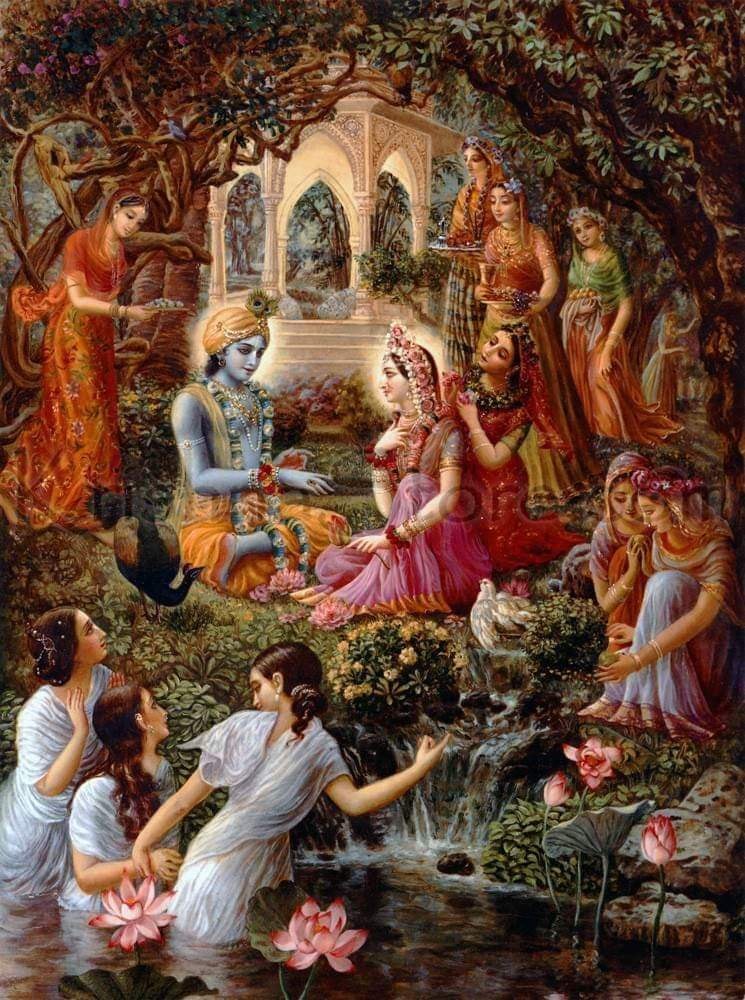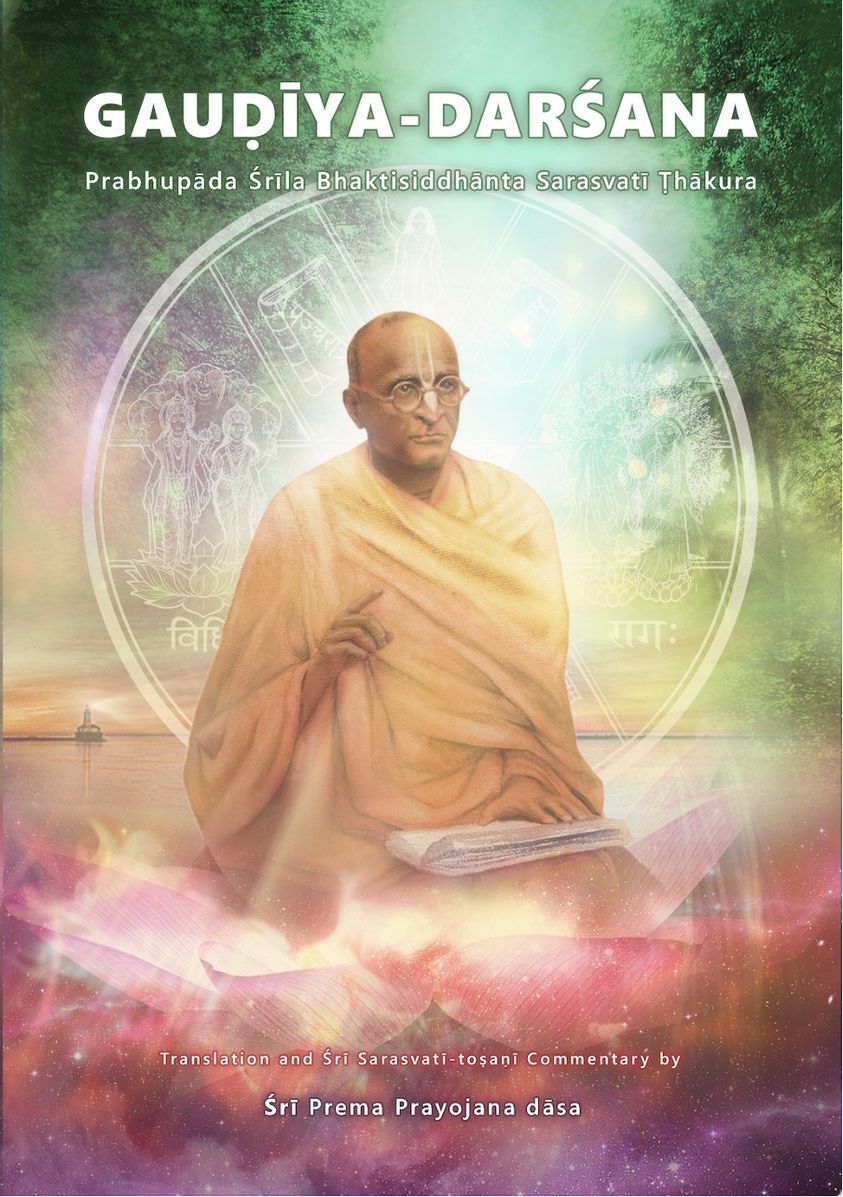Puranic Time Measurements “Explained”.
Outside of the three planetary systems, the four Yugas multiplied by one thousand comprise one day on the planet of Brahma. A similar period comprises a night of Brahma, in which the creator of the universe goes to sleep…
The Puranas describe a number of time cycles within cycles. Discussions of these cycles can become confusing because different cycles are measured in different types of units. For example, the cycles are often described in units of deva years ;( years in the higher planets ), each of which equals 360 human years. ;
;
;;
The following description starts with the smaller cycles and works up to the larger ones. The length of each cycle is given in ordinary human (earth) years, as well other units where appropriate. Large numbers are described using the conventions of American English: thus, a million is a thousand thousand, a billion is a thousand million, a trillion is a thousand billion.
Maha Yugas
The smallest cycle is called a maha yuga. A maha yuga is 4,320,000 human years. Each maha yuga is subdivided into the following four ages, whose lengths follow a ratio of 4:3:2:1:
Satya Yuga (also called Krita Yuga)
This first age is 1,728,000 human years. Also known as the Golden Age or age of Truth. The qualities of this age are: virtue reigns supreme; human stature is 21 cubits; lifespan is a lakh of years, and death occurs only when willed.
Treta Yuga
This second age is 1,296,000 human years. Also known as the Silver Age. The qualities of this age are: the climate is three quarters virtue and one quarter sin; human stature is 14 cubits; lifespan is 10,000 years.
Dvapara Yuga
This third age is 864,000 human years. Also known as the Bronze Age. The qualities of this age are: the climate is one half virtue and one half sin; lifespan is 1,000 years.
Kali Yuga
The fourth and last age is 432,000 human years. Also known as the Iron Age. This is the age in which we are presently living. The qualities of this age are: the climate is one quarter virtue and three quarters sin; human stature is 3.5 cubits; lifespan is 100 or 120 years.
Days (Kalpas)
A kalpa is a single daytime period in the life of Brahma, the creator god. Two kalpas are a day and a night of Brahma.
Each kalpa is composed of 1,000 maha yugas. A kalpa is thus equal to 4.32 billion human years. His full day of 24 hours are 8.64 Billion human years and still even so this is unimaginable to us, Krishna is seen by Lord Brahma As the Supreme Lord, read Lord Brahmas prayers below.
At the end of Brahma’s daytime period, the Three Worlds (Bhuloka, Bhuvarloka, Swarloka) and the seven underworlds (of the nagas) are temporarily dissolved (pralaya); that is, the same souls will be reincarnated when the next day of Brahma begins.
The Vishnu Purana states that at the end of the daytime period of Brahma, a dreadful drought occurs that lasts 100 years, and all the waters are dried up. The sun changes into seven suns, and the three worlds (Bhurloka or Earth, Bhuvarloka or the lowest heaven, and Svarloka or the next higher heaven) and the underworlds are burned bare of life. The inhabitants of Bhuvarloka and Svarkloka flee to the next higher heaven, Maharloka, to escape the heat; and then to the next higher heaven, Janaloka.
Then mighty clouds form and the three worlds are completely flooded with water. The lord Vishnu reposes on the waters in meditative rest for another whole kalpa (4.32 billion years) before renewing the creation.
The destruction that takes place at the end of a daytime of Brahma is referred to as naimittika, which is incidental or occasional. The characteristic of this destruction is that the three worlds continue to exist but are made uninhabitable. The souls of individuals also continue to exist to be reincarnated in the next daytime of Brahma.
Brahma Years
A year of Brahma is composed of 360 day/night cycles of Brahma
Brahmas Life
The lifespan of Brahma is 100 Brahma years, or 72,000 kalpas, or 311.04 trillion human years.
At the end of the life of Brahma, all worlds are completely dissolved (mahapralaya).
Manvantaras
Another cycle that overlaps the others is that of manvantaras. Each kalpa is reigned over by a succession of 14 Manus, and the reign of each Manu is called a manvantara. A single manvantara is approximately 71 maha yugas.
Each Manvantara is followed by a Deluge, which destroys the existings continents and swallows up all living beings, except the few who are preserved for the repeopling of the earth.”
Our Position
We are located in the fifty-first Brahma year of the life of our Brahma.
Within that Brahma year, we are in the first Brahma day, called the Varaha kalpa.
Within that Brahma day, we are in the seventh manvantara, and in the 28th maha yuga of that manvantara. This would place us at about the 454th maha yuga of the 1,000 maha yugas that comprise this day of Brahma.
Within this maha yuga, we are in Kali Yuga. The 5100th year of Kali Yuga will correspond to the year 2,000 A.D. That means that we are fairly early in Kali Yuga and this age will continue 426,000 more years.
LORD KRISHNA IS BEYOND SUCH TIME AND SPACE
Govindam prayers from Sri Brahma-samhita prayd by Lord Brahma to Govinda Lord Krishna
Brahma-samhita Text 5.29
cintamani-prakara-sadmasu kalpa-vrksa-
laksavrtesu surabhir abhipalayantam
laksmi-sahasra-sata-sambhrama-sevyamanam
govindam adi-purusam tam aham bhajami
I worship Govinda, the primeval Lord, the first progenitor who is tending the cows, yielding all desire, in abodes built with spiritual gems, surrounded by millions of purpose trees, always served with great reverence and affection by hundreds of thousands of laksmis or gopis.
Brahma-samhita Text 5.30
venum kvanantam aravinda-dalayataksam
barhavatamsam asitambuda-sundarangam
kandarpa-koti-kaminiya-visesa-sobham
govindam adi-purusam tam aham bhajami
I worship Govinda, the primeval Lord, who is adept in playing on His flute, with blooming eyes like lotus petals, with head decked with peacock’s feather, with the figure of beauty tinged with the hue of blue clouds, and His unique loveliness charming millions of Cupids.
Brahma-samhita Text 5.31
alola-candraka-lasad-vanamalya-vamsi-
ratnangadam pranaya-keli-kala-vilasam
syamam tri-bhanga-lalitam niyata-prakasam
govindam adi-purusam tam aham bhajami
I worship Govinda, the primeval Lord, round whose ornaments; pranaya — of love; keli-kala — in pastimes; vilasam — who always revels; syamam — Syamasundara; tri-bhanga — bending in three places; neck is swinging a garland of flowers beautified with the moon-locket, and whose two hands are adorned with the flute and jeweled ornaments, who always revels in pastimes of love, whose graceful threefold-bending form of Syamasundara is eternally manifest.
The Supreme Personality Of Godhead Sri Krishna and His eternal consort Srimati Radharani
Brahma-samhita Text 5.32
angani yasya sakalendriya-vrtti-manti pasyanti panti kalayanti ciram jaganti
ananda-cinmaya-sad-ujjvala-vigrahasya govindam adi-purusam tam aham bhajami
I worship Govinda, the primeval Lord, whose transcendental form is full of bliss, truth, substantiality and is thus full of the most dazzling splendor. Each of the limbs of that transcendental figure possesses in Himself the full-fledged functions of all the organs, and eternally sees, maintains and manifests the infinite universes, both spiritual and mundane.
———————————————————————————————————–
Please also have a look at my Yoga Nidra relaxation CD click




 Posted in
Posted in 







